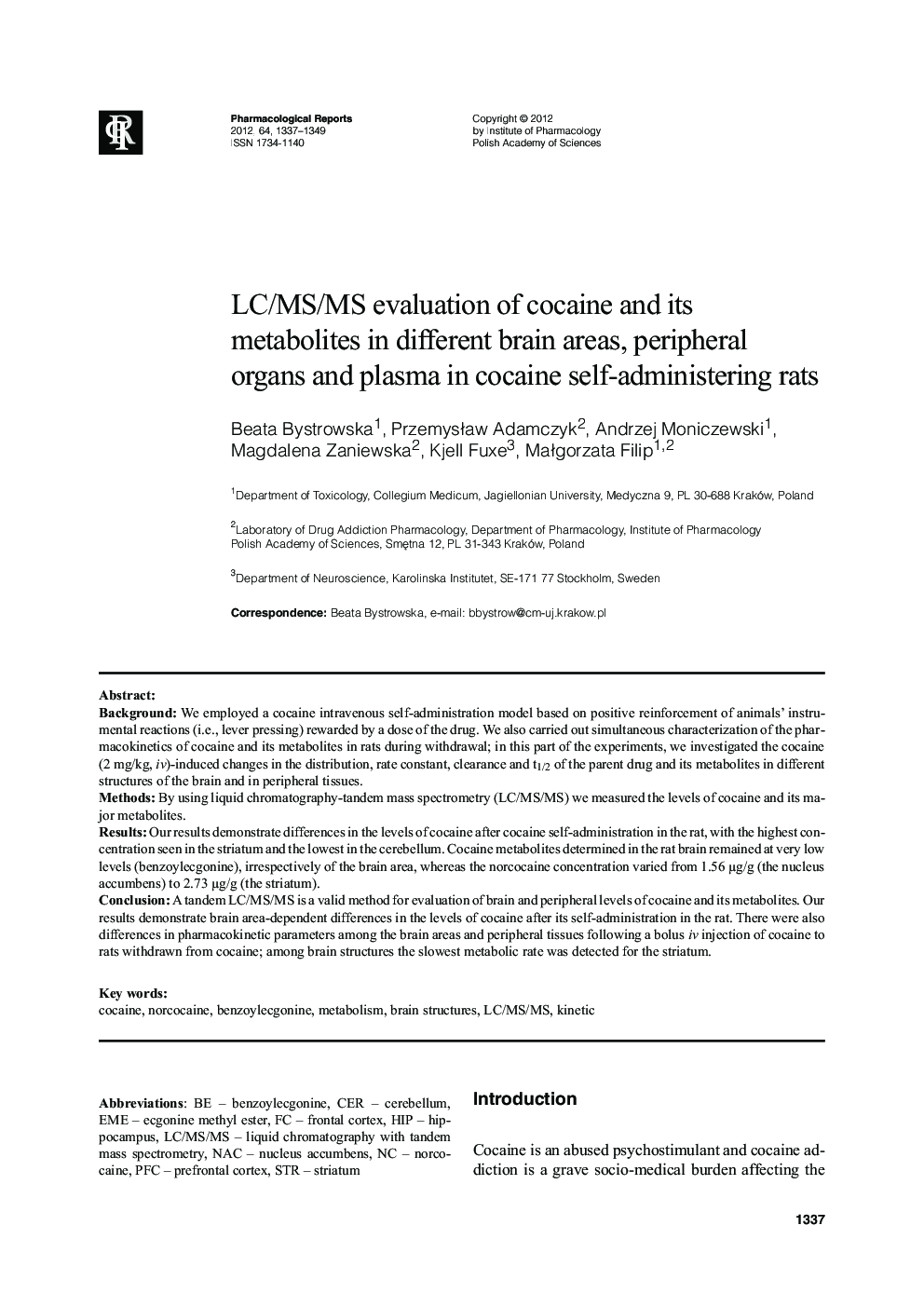| Article ID | Journal | Published Year | Pages | File Type |
|---|---|---|---|---|
| 2011530 | Pharmacological Reports | 2012 | 13 Pages |
BackgroundWe employed a cocaine intravenous self-administration model based on positive reinforcement of animals' instrumental reactions (i.e., lever pressing) rewarded by a dose of the drug. We also carried out simultaneous characterization of the phar-macokinetics of cocaine and its metabolites in rats during withdrawal; in this part of the experiments, we investigated the cocaine (2 mg/kg, iv)-induced changes in the distribution, rate constant, clearance and t1/2 of the parent drug and its metabolites in different structures of the brain and in peripheral tissues.MethodsBy using liquid chromatography-tandem mass spectrometry (LC/MS/MS) we measured the levels of cocaine and its major metabolites.ResultsOur results demonstrate differences in the levels of cocaine after cocaine self-administration in the rat, with the highest concentration seen in the striatum and the lowest in the cerebellum. Cocaine metabolites determined in the rat brain remained at very low levels (benzoylecgonine), irrespectively of the brain area, whereas the norcocaine concentration varied from 1.56 μg/g (the nucleus accumbens) to 2.73 μg/g (the striatum).ConclusionAtandem LC/MS/MS is a valid method for evaluation of brain and peripheral levels ofcocaine and its metabolites. Our results demonstrate brain area-dependent differences in the levels of cocaine after its self-administration in the rat. There were also differences in pharmacokinetic parameters among the brain areas and peripheral tissues following a bolus iv injection of cocaine to rats withdrawn from cocaine; among brain structures the slowest metabolic rate was detected for the striatum.
